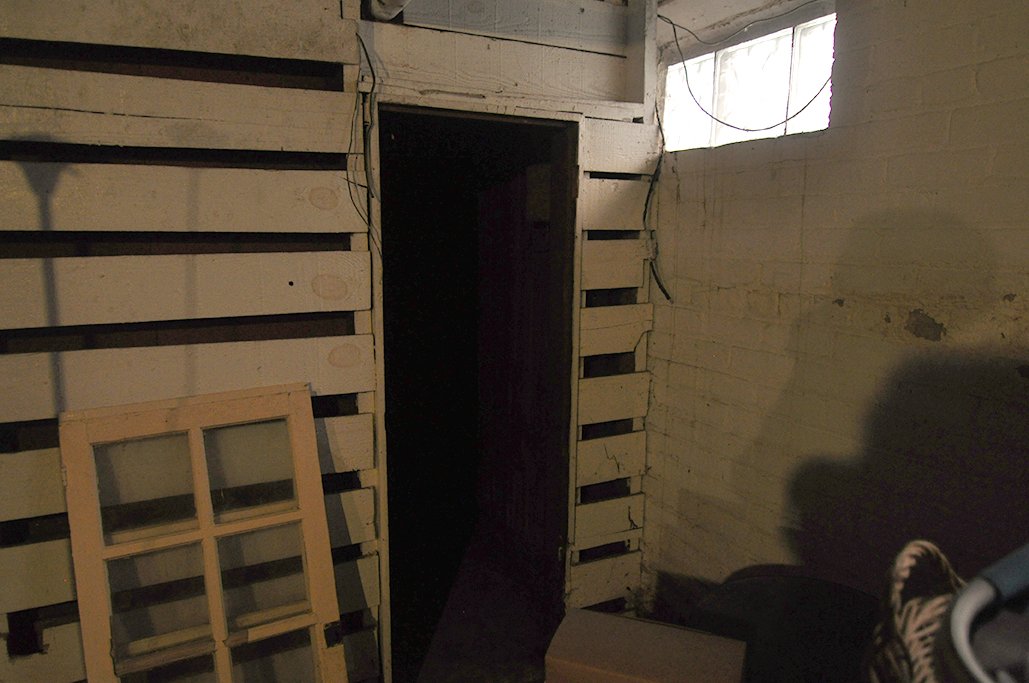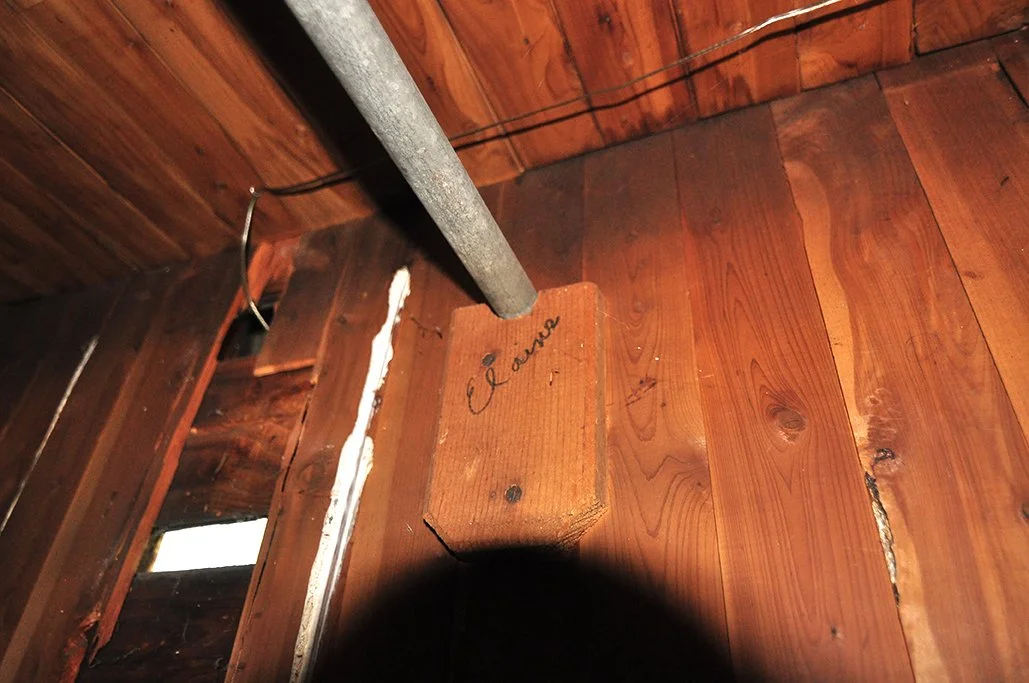I had a chance this week to start working on my basement screen printing darkroom — my house is 97 years old (which is sometimes cool and sometimes not), and there’s a walk-in cedar closet in the basement that is perfect for this purpose. Please excuse the crime scene-ish photos — the closet doesn’t have a light source yet.
The cedar closet in my basement.
The open entryway to the basement cedar closet.
A darkroom for burning screens is similar to a photography darkroom (do people even know about film anymore?) in that it needs to be completely dark so that no light sneaks in to prematurely expose the screens, which are coated with light-sensitive emulsion. So I’ve blocked out all the light leaks in the closet, and it wasn’t too difficult. With a garage full of random wood pieces, I was able to easily cover the few areas that were letting light in. The door is missing from the closet, but I used some spare curtains and made a fabric doorway.
While I was down there, I was reminded of something interesting — two of the poles in the closet are marked in pencil “Elaine” and “David.”
A couple of years ago I had done some research to find out who else has lived in my house, and according to the 1940 census, a family of four with children named Elaine and David lived here. Their parents, Simon and Kate, were originally from Poland, and they had a live-in maid named Grace from Illinois who also lived in the house. I wonder a lot which bedroom was Elaine’s and which was David’s. I assume the biggest bedroom was Simon and Kate’s (and now my print studio), and the bedroom with the tiny half-bath attached to it was Grace’s. I suppose the bedroom closest to the biggest was probably David’s, since he was the youngest. More research brought me to Elaine’s wedding announcement in 1948 — she married a man in California, and the announcement in the Detroit Jewish Chronicle included a photo of her. It’s funny to wonder what they would think about my turning parts of the house into a screen printing studio.
Anyway, closing up all of the light leaks is a good first step for the darkroom. Next I need to figure out logistical things like how to lay out the space and find surfaces to coat screens, and after that it’ll be time to open up the emulsion and start doing some exposure tests. Exciting!




